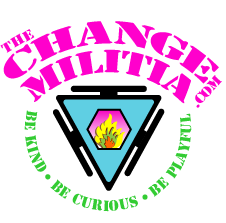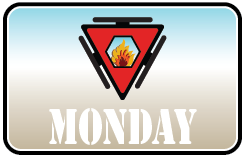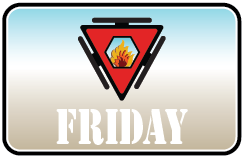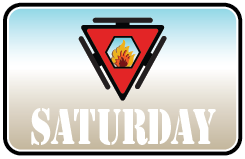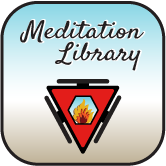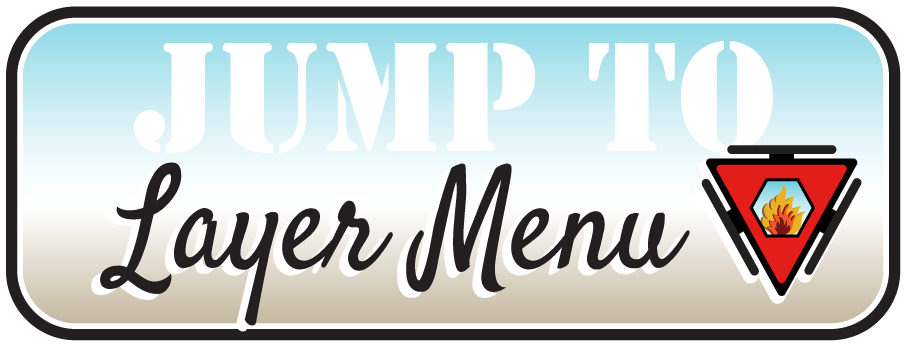Layer Three, Week Four – Sunday
- Morning – Watch Video and Read Instructions Edges of the Breath
- Midday – Watch Video and Read Instructions No Sweat
- Evening – Week Four Concepts
- Evening – Practice Edges of the Breath
Sunday’s Focus
Set a timer for every hour. When it rattles and hums (U2 reference for their least focused album), review the previous hour and label your movements as action or reaction. Actions are deliberate and move you closer to your intentions and trajectory. Reactions are everything else. Be honest and begin to identify which of your reactions are repetitive, habitual, and unproductive. Make a list, an actual list with paper and a pen but not a purple pen because this is serious.
Sunday’s Concepts
The typical progression/cycle that leads to your dysfunctions is typical – expansion – transition – trigger – distraction – imbalance – reaction – compensation – fatigue – stress – overwhelm – dysfunction.
This cycle is why you get sick, injured, lazy, angry, depressed, drunk, high, divorced, fat, and unkind. Let’s continue to break down the components of these cycles and give you some tools to make different choices.
We talked about distraction. We discussed imbalance. Now let’s talk about reactions and compensations.
Reactions are movements instigated by your subconscious mind. Reactions will always leave you less vital. They drain your energy or have a negative return on your energetic investment (you get less back than you put in). Reactions and compensations will usually create a cascade of other reactions and compensations that will further drain your energy, pull you off track, and slow your momentum.
Compensations are the ways you change, control, manipulate, or ignore the present moment until you burn off enough energy to feel more familiar. When you get too something, you do something. What you do are your reactions and compensations.
Layer Three, Week Four – Monday
- Morning – Practice Edges of the Breath
- Evening – Read Monday Concepts
- Evening – Practice No Sweat
Monday’s Focus
Continue to list your actions and reactions; Monday’s workday reactions are usually different than Sunday’s. Remember: actions are deliberate and move you closer to your intentions and trajectory; reactions are everything else. Don’t judge, just list.
Monday’s Concepts
Compensations include mental and emotional things like stress, blame, resignation, jealousy, frustration, impatience, comparison, disconnection, anger, sadness, grief, awe, excitement, detachment and every variety of fear. Physical compensations include tension, addictions, food, nail biting, foot tapping, gesturing, sex, exercise and napping. Yes, even napping. When any of the above things are done without deliberation and thoughtful consideration of your intentions, trajectory, the facts and possible alternatives, they are compensations.
I nap fairly regularly. I usually get up around 4:30 a.m. but sometimes it is as early as 3:00. A 20-minute nap after lunch is a great way to rejuvenate and it works. But sometimes I nap as a way to disperse potential. Some days I am blasting through the day and the energy I am generating begins to feel overwhelming and then I use a nap as a way to let that energy disperse. It would be more beneficial for me to spend that excess energy doing something that has a long-term benefit, like trail-running, pull-ups, or interpretive breakdancing.
If, after my nap, I am able to return to efficient productivity, that productivity will move me closer to my intentions. A nap as rejuvenation is an action with a long-term benefit. A nap as compensation (diffusion for overwhelm) is a reaction with a result that leaves me less energized and it creates a predisposition for the future. A nap when I am overwhelmed leaves me feeling sluggish, disoriented, and scattered.
Layer Three, Week Four – Tuesday
- Morning – Practice Edges of the Breath
- Evening – Read Tuesday Concepts
- Evening – Practice No Sweat
Tuesday’s Focus
Contemplate the actions you have listed. Generally, what are they? Why do you choose them instead of some reaction? What was your energy configuration before the action? How did you feel after? Over the next few days decades, congratulate yourself every time you take a beneficial action.
Tuesday’s Concepts
Remember, this isn’t about good and bad, right or wrong or negatively judging your imbalances, reactions and compensations; it is about gaining the awareness that your energy and vitality are being compromised by what you habitually do. Your reactions and compensations are draining you. You get fatigued.
Remember the isometric movements where you pushed your palms together? You expended a ton of energy and went nowhere. Imagine your energy reserves as a pocket full of $100 bills and every time you react without a conscious decision it is like ripping up a Franklin. That energy is gone, it is not like half of the dozen pieces of a hundred dollar bill can buy $50 of groceries. Once the reaction takes place, the energy loses all of its value and frankly, it happens hundreds of times a day (pun intended).
Your inability to consciously control your energy expenditures leads to the exhaustion of your resources. Those resources will be mental, emotional, physical, energetic, or environmental. You can be mentally fatigued without even being emotionally present or physically engaged. Your emotional reactions and physical compensations can fatigue the people around you (environmental).
Fatigue can also shift from one body to another as the cycle pulls energy from everywhere to fuel the on-going reactions and compensations. That is how you feel physically exhausted after doing your taxes or negotiating with a car salesman. Or maybe like pulling cash out of your vacation fund, IRA, and child’s college fund to pay for your gambling habit.
Layer Three, Week Four – Wednesday
- Morning – Practice Edges of the Breath
- Evening – Read Wednesday Concepts
- Evening – Practice No Sweat
Wednesday’s Focus
Okay, hopefully, you’ve got a few days worth of reactions listed. Read them over and give some thought to what you did after the reactions. Post-reaction is compensation. Begin to identify your compensations. Compensations (reread Monday’s Concepts) will be inefficient expenditures of energy whose underlying purpose will be to drain what feels like excess energy back to a place of mediocrity where your subconscious mind feels safe.
Wednesday’s Concepts
Here is an example of the progression as a middle of the week recap.
You are a runner. You go for a run, you’re having a great run (expansion), your energy builds to a point (transition) where your subconscious mind starts to worry that you are over-energized (trigger). You start mentally or emotionally obsessing on something (distraction) and as a result of your worrying your energy shifts out of your lower body into your head (imbalance). You run along and don’t notice an obstacle, which you then trip over.
Your body reflexively over-contracts (reaction) to keep you from falling resulting in a pulled muscle. You continue to run by babying the pulled muscle and letting other muscles do most of the work (compensation). One part of your mind is telling your healthy muscles that they need to step-up and help the injured muscles. Another part of your mind is trying to convince the muscles that they are being unfairly targeted.
Isometrically pushed, pulled and over-used (fatigue); the muscles start to feel tension, strain, and anxiety (stress) until they cramp (overwhelm). If this goes on for long enough, the previously healthy muscles, or the structures that attach to, get over-worked to the point of injury (dysfunction).
Layer Three, Week Four – Thursday
- Morning – Practice Edges of the Breath
- Evening – Read Thursday Concepts
- Evening – Practice No Sweat
Thursday’s Focus
Catch yourself in your reactions and compensations and then reflect on your energy configuration just before you reacted and compensated. What was your configuration and what was your energy level? See if you can feel how you are less vital and energized as a result of your reactions and compensations.
Thursday’s Concepts
Let’s review expansion as it relates to balance and how it leads to the transitions where your subconscious mind triggers distractions.
Generally, expansion happens when you collect more energy than you exert. A familiar feeling of expansion would be how it feels just before you start to cry. You’re watching the big game, eating some wings, drinking a few cold ones, and on comes a commercial about really big horses. The story and images evoke an emotional response. It starts with a smile and a warmth that spreads through your chest. You feel it build until it starts to tighten your throat. Your sinuses pressurize and your eyelids start to swell as the emotion waterfalls from tear ducts.
The emotional expansion that happened as you watched the commercial was unbalanced. It was primarily emotional. If you had been fighting with a hard to open jar of salsa as you watched, you probably wouldn’t have had the same reaction. The physical struggle would have balanced the emotional pull on your heartstrings. The same thing would have happened if you were doing Sunday’s New York Times crossword puzzle when you watched. The mental expenditure would have balanced the emotional.
You may have still been emotional in either case but it probably wouldn’t have triggered the same reaction. Your balance has a range that is tolerable before your subconscious mind transitions and starts to trigger distractions.
Layer Three, Week Four – Friday
- Morning – Practice Edges of the Breath
- Evening – Read Friday Concepts
- Evening – Practice No Sweat
Friday’s Focus
Increase your awareness of your transitions and the range of your transitions. What does it feel like when you move from expansion to distraction? See if you can feel what being expanded feels like. Be as aware as possible to the changing sensations as your energy expands. The energy you are feeling for is your subtle body. Get to know your subtle body, it is your greatest ally.
Friday’s Concepts
Let’s discuss transitions. Between good and bad, right and wrong, typical and atypical, and comfort and discomfort, exists a place of transition, a tolerable range. Transitions are defined by the shift that occurs from okay to no longer okay. Your transitions are unstable, fluctuating and mutable. (Review the Zero, Non-zero movements as a physical example of this) These transitional ranges are what your subconscious mind uses to put your finger on the triggers of your distractions. They become the signal, the lights that flash and alarms that wail.
Just before you sweat your body goes through a transition as it struggles to regulate your temperature. This transition has a set of sensations that is different than those just before or just after you start sweating. Your body goes from acceptable to warm, and from warm to too warm. Before you begin to sweat there is a quickening in your system. That expansive quickening is the breeding ground for your triggers. If you were not uncomfortable, if there were no quickening, there would be no desire to trigger distractions.
There will be an expansive quickening in every reaction you have. Understanding where the edges of your ranges are is the key to healthy growth.
Layer Three, Week Four – Saturday
- Morning – Practice Edges of the Breath
- Evening – Read Saturday Concepts
- Evening – Practice No Sweat
Saturday’s Focus
Feel for your edges, the place of increased vitality preceding your reactions and compensations. Edges are marked by some level of discomfort, a burgeoning of energy, and feeling like you are on the verge of the urge to purge. Your edges will also be felt in degrees. You will have a soft edge that is probably tolerable all the way up to a hard edge where things start to feel like life and death.
Saturday’s Concepts
When you are able to discern the beginning and end of your range, you will begin to feel the edges of your edges. An analogy would be putting your hand under the kitchen faucet, turning it on, and being able to feel when the water shifts from cold to warm, warn to hot, and hot to too hot. You will begin to feel yourself transitioning from a place of balance to some sort of imbalance. A degree of imbalance can help to generate momentum, like leaning forward before you start to walk. Too much imbalance leads something less productive, like stumbling forward onto your face. The comfort range of your subconscious mind determines your edges, the places where your too much lives.
Each of your bodies will have its own transitional range and edge. Your mental range will be different than your emotional or physical range. Each range will affect every other range. For me, when I am in the range I call hungry, I get mentally scattered and emotionally stagnant. My energy gets frenetic and I disconnect from my environment and the people in it.
Each of your edges will influence every other edge. If I am struggling trying to upload an audio file to our website, just about ready to curse, and Kelly comes in to ask me if I remembered to feed the neighbor’s dog, I will probably be hypersensitive. They aren’t directly connected, but if one part of my system is on high alert, all of my bodies and their components will be on high alert.
Getting to know your transitional ranges will allow you to identify when you are approaching the energy levels that lead to the triggers for your distractions. When you can bring awareness to these energy levels, you can fundamentally change your relationship with them. What you have typically labeled in the past as too much will be relabeled as vibrant success, fluid momentum, and exuberance. Understanding your transitional ranges and getting to know your edges will allow you to begin to rebalance sooner. Look for more on that next week.
Edges of the Breath
Step 1 – Get comfortable. Do a Current30 and then allow your body to relax. You can do this in any position but make sure you can maintain the position without distraction.
Step 2 – Take note of your general disposition and then inhale deeply. Hold your breath without closing your throat.
Step 3 – Once your breath is held, be aware of what it feels like mentally, emotionally, and energetically to hold your breath.
Step 4 – Track the transition from being comfortable to discomfort and from discomfort to extreme discomfort.
Step 5 – Feel for the place of expansive quickening just before you feel like you absolutely positively, need to release your breath.
Step 6 – Repeat five or six times. Take several normal breaths between each repetition to allow your system to calm. Feel for the transition from elevated to calm.
Step 7 – Do the exercise again, holding your breath out (without closing your throat). Repeat as above several times and notice how different it feels, how the quality of the “panic” is different and the transition changes.
Why it Matters – This movement guarantees you will experience your edges, from soft to hard. It also gives you a healthy way to extend the amount of healthy discomfort you can tolerate.
Everyday Usability – You go through a very similar transition before every reaction and every habitual movement. Once you can easily identify the stages or ranges of your transitions, it will be much easier to shift out of the movements that lead to dysfunction, injury, inefficiency, and failure.
Progression – Try this with a neutral breath (the place where you passively exhale until the air pressure is equal inside and outside your body). Try all three variations (held, out, neutral) while walking or running. Try it while doing squats. The final progression would be to practice extending the expansion quickening stage by tolerating the extreme discomfort for longer and longer.
No Sweat, Sweat
Step 1 – Find a movement that will be vigorous enough to cause you to sweat within three minutes. Try to make it simple so that you can concentrate on your transition from not sweating to sweating.
Step 2 – Before you start the movement, take a Current30, and feel for your state of being in each of your bodies.
Step 3 – Take a few deep breaths and allow yourself to settle. Check in with each of your bodies and allow them all to unwind.
Step 4 – As you begin the movement, feel for the stages your body goes through as it transitions from not sweating to sweating.
Step 5 – Pay special attention to the expansive quickening stage just before you sweat.
Step 6 – Continue to do the movement and feel how quickly your systems adapt to sweating, how sweating becomes the new normal.
Why it Matters – Getting to the place of sweating guarantees you will experience the physical transition, from not sweating to sweating. It will give you a direct, personal experience of transition. The same transition happens when you go from not mad to mad or not sad to sad.
Everyday Usability – When you can feel your transitions, especially the expansive quickening, you will have some warning that you are about to be triggered into distraction and compensation. Once you can easily identify what stage of your transitions you are in, it will be much easier to determine how much energy is necessary to get back to centered.
Progression – Find a movement that will take you from aerobic to anaerobic and track your transition, focusing on the expansive quickening just before you go anaerobic. Aerobic movements are ones that you can do and still easily hold a conversation, your breathing rate is average, and you feel like you could continue for a long while, walking or an easy job would be examples. Anaerobic movements, like sprinting, are not sustainable. Your breath rate and heart rate will increase and you will fatigue.
